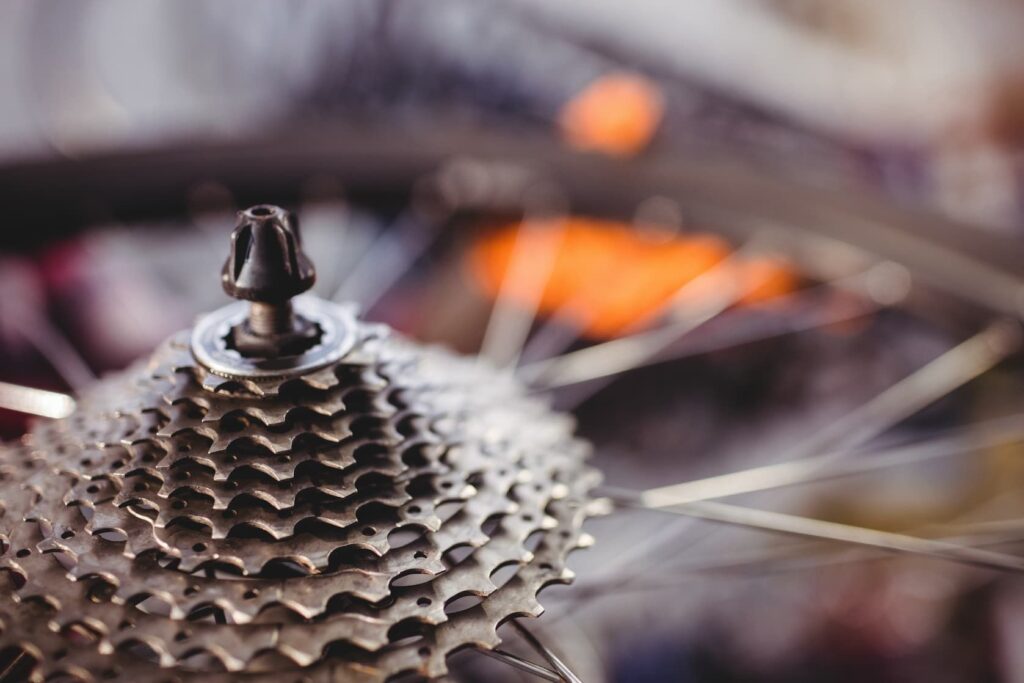Choosing the Right Tires
If you want to upgrade your mountain bike without breaking the bank, one of the first areas to look at is the tires. Tires are crucial for performance and can drastically change your riding experience.
Why Tires Matter
Tires can affect grip, speed, and comfort on the trail. Upgrading to better tires can lead to improved traction on steep climbs and smoother rides over technical terrain. Plus, if you can nail that corner without slipping, you’ll be one happy rider.
What to Look For
- Tread pattern: Look for tires that have a good grip but aren’t overly aggressive. You want something that allows for rolling speed on the flats but still hooks up enough on the climbs.
- Width: Depending on your terrain, wider tires can improve traction. Just make sure they fit your frame and fork.
- Material: Consider whether you want a more puncture-resistant option or someone lighter for better speed.
Affordable Options
Some great budget-friendly brands include Schwalbe, Maxxis, and Continental. Many of their mid-range tires offer substantial performance upgrades without a hefty price tag. I’ve personally had fantastic experiences with the Maxxis Minion DHF, which gripped well on technical trails without costing an arm and a leg.
Upgrading Your Saddle
Another upgrade that can significantly enhance your riding experience is the saddle. Trust me, you do not want to spend hours on a bike seat that feels like a piece of concrete.
Comfort is Key
When choosing a saddle, comfort should be your main focus. Think about your typical ride distance and style. A roadie-style saddle isn’t going to cut it for a long day on the trails, and trust me, your backside will thank you later.
Saddle Features to Consider
- Padding: More padding isn’t always better. It can actually lead to discomfort over long rides. Look for a saddle with just enough padding to help without feeling squishy.
- Shape: Different saddles are designed for different riding styles. A wider saddle may fit better for trail riding, while a more streamlined option might be suited for XC racing.
- Materials: Lightweight materials can lessen the overall weight of your bike, but ensure it doesn’t compromise comfort.
Top Budget Picks
Brands like WTB and Fizik offer fantastic saddles at reasonable prices. Personally, I’ve found that the WTB Volt is a great options for trail riders—it’s comfy, durable, and doesn’t empty your wallet.
Handlebar Upgrades
Next up is the handlebar. Swapping out handlebars might seem like an unnecessary luxury, but trust me—it can make a big difference in how your bike feels on the trail.
Why Change the Handlebar?
The right handlebars can enhance your control and comfort. Wider bars can provide better stability and leverage, especially on technical sections, while a different rise can change your body positioning, which significantly affects your riding style.
Choosing the Right Width and Rise
- Width: Wider bars usually improve control but can make your bike feel less nimble. It’s all about finding the right balance.
- Rise: The rise of the handlebar can affect your posture. A higher rise can offer a more upright riding position, while lower rise bars may lead to better aerodynamics and performance on descents.
- Material: Aluminum bars are generally lighter and more affordable than carbon, making them a solid choice for budget-conscious riders.
Recommendations
Check out options from brands like Race Face and Renthal. I’ve really liked the Race Face Chester series; they provide a good mix of strength and weight without any premium price tag.
Enhancing Braking Performance
Brakes are kind of a big deal when it comes to mountain biking. Upgrading your brakes can increase safety while giving you better control on the downhills.
Brake Systems
Disc brakes are typically preferred over rim brakes for mountain biking due to superior stopping power and better performance in wet conditions. If you currently have rim brakes, it might be worth considering the switch.
Easy Upgrades
- Brake pads: Replacing your pads with higher-performance options can drastically improve performance for pretty low cost.
- Rotors: Thicker or larger rotors can give you more stopping power and heat dissipation, especially essential on longer descents.
- Hydraulic vs. Mechanical: If you have mechanical disc brakes, consider upgrading to hydraulic—they offer much better modulation and stopping power.
What’s on the Market?
Brands like SRAM and Shimano have excellent entry-level options if you decide to upgrade your entire braking system. After switching to Shimano SLX, I can confidently say my stopping power has improved dramatically.
Improving Suspension
Your bike’s suspension setup can make a world of difference in how well it performs on rough terrain. While high-end upgrades can get pricey, there are still budget options available.
Air vs. Spring
Investing in air shocks can often be a game-changer. They are lighter and more adjustable compared to coil springs. If you are feeling really adventure-spirited, you could always try tuning the suspension yourself.
Upgrading Components
- Seals; Replace worn seals in your suspension fork to maintain smooth performance.
- Oil: Regularly changing the oil can prolong the life of your suspension and improve performance.
- Spring rate: If you’re on a coil shock, considering a spring rate change can provide a better ride based on your weight and riding style.
Where to Find Affordable Parts
Online retailers’ clearance sections often have great deals on suspension parts. I once found a quality set of seals for my fork at half the retail price during an end-of-season sale. Score!
Other Essential Upgrades
Besides the obvious components, there are smaller upgrades that can elevate your riding experience without drastically impacting your budget.
Pedals
Swapping out your pedals can improve your connection to the bike. You can choose between clipless for increased efficiency or platform pedals for casual riding.
Grips
Grips can get neglected but upgrading to a more ergonomic or softer grip can reduce hand fatigue during those long rides. Brands like ODI and Lizard Skins are often my go-tos.
Chain and Cassette
- Replacement: Regularly replacing your chain can save wear on your cassette and chainrings, leading to a more efficient and smoother power transfer.
- Cleaning: Keeping it clean may prolong their lifespan. It is surprising how a little maintenance goes a long way.
Conclusion
Upgrading your mountain bike does not have to mean spending a fortune. Focusing on budget-friendly components like tires, saddles, handlebars, braking systems, and even smaller accessories can transform your riding experience without emptying your wallet.
Every upgrade will improve your bike’s performance and comfort, making those epic trail rides even more enjoyable. Go ahead and change things up on your bike, and remember to have fun out there!






